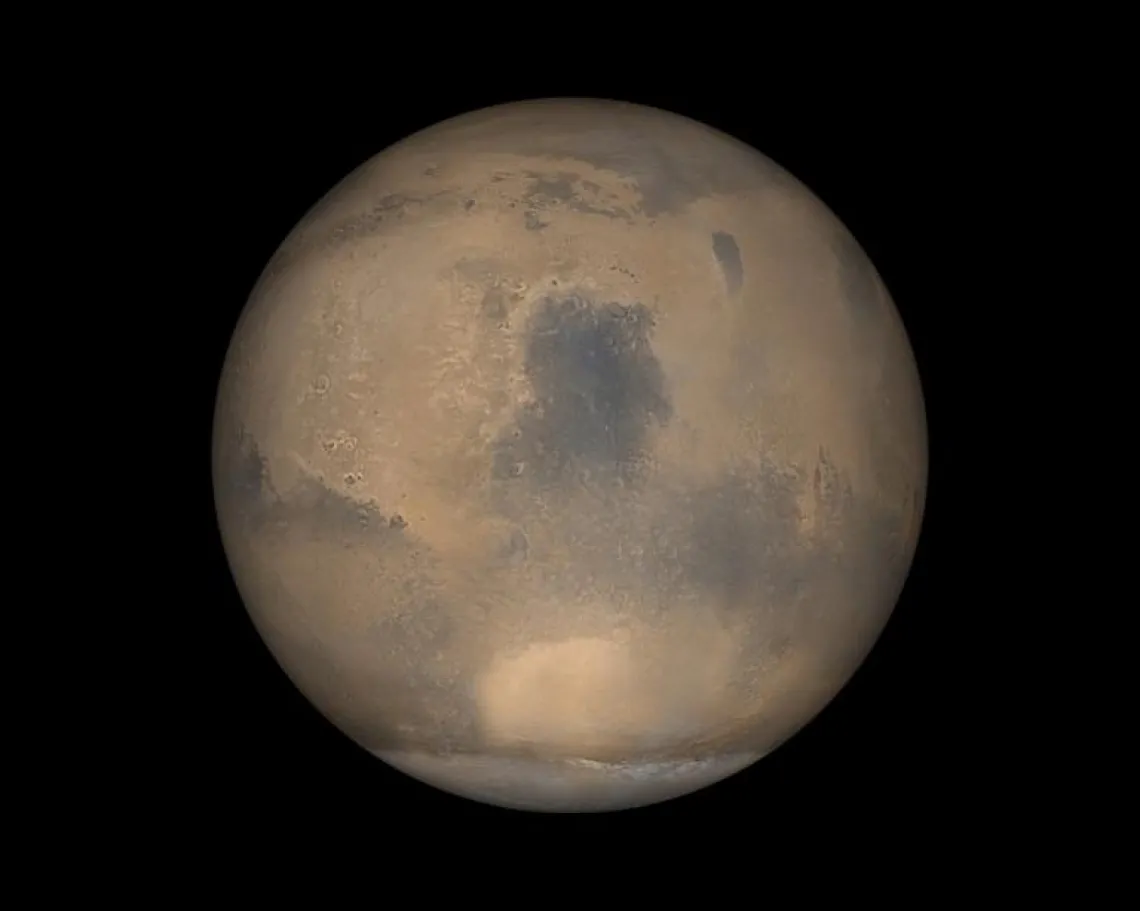
NASA/JPL/Malin Space Science Systems
An image of Mars taken by the Mars Global Surveyor. The large dark region near the center is Syrtis Major.
Opposition is the best time to look at Mars because it is closer to us and therefore appears bigger through a telescope. You can make out features on the surface that you may not be able to see when it is farther away. To the naked eye, Mars appears noticeably brighter than usual. This is not only due to its closeness, but also because of something called the opposition effect. When light is coming from the same direction as the observation, you will not have any shadows that darken your view. It will appear to brighten sharply a few days before opposition and then dim sharply a few days after, even though the distance isn't changing that quickly.
Because Mars' and Earth's orbits are not perfectly circular, and because Mars is not a uniform color over its entire surface, the dates of closest approach and brightest magnitude may not fall exactly at the same time as opposition. Here are when each event happens this year (Mountain Standard Time):
- 30 Nov 7:12 pm — Closest approach (50.6 million miles) and largest apparent size (17.2 arcseconds)
- 7 Dec 1:26 pm — Brightest apparent magnitude (–2.0)
- 7 Dec 9:38 pm — Largest angle away from Sun in our sky (177.7°)
The last Mars opposition was in October 2020, and the next one will be in January 2025. Again, because of non-circular orbits, each opposition is a little different. The last one was a little closer, and the next one will be a little farther. This goes through a cycle that lasts around 16 years. The last really close opposition was in July 2018, and the next really close one will be in September 2035.
Bonus event!
Another exciting event to look for is an occultation of Mars by the Moon. This is not related to the opposition, but happens to be occurring around the same time. An occultation is when one object passes directly behind another one so that we cannot see it. The Full Moon happens to occur only a half hour before the Mars opposition, and it also happens to be at the right angle from the ecliptic that it will pass in front of Mars. In Tucson, Mars will disappear at 7:31 pm and reappear at 8:29 pm on Dec 7.
The occultation is not visible everywhere the Moon and Mars are above the horizon. This is because the Moon is much closer to us than Mars, and so it will be in slightly different parts of the sky depending on your location. You can check In-The-Sky.org for a map and times specific to your location.

